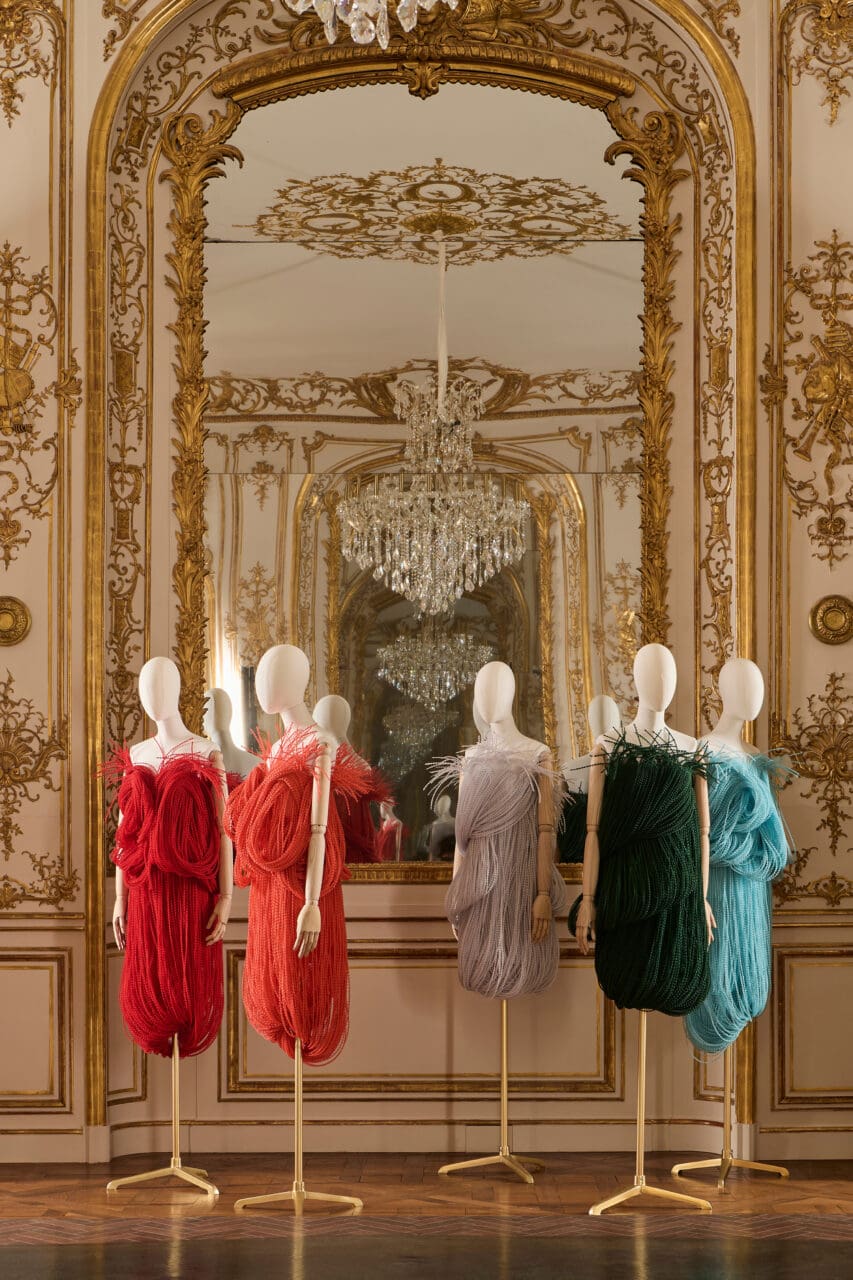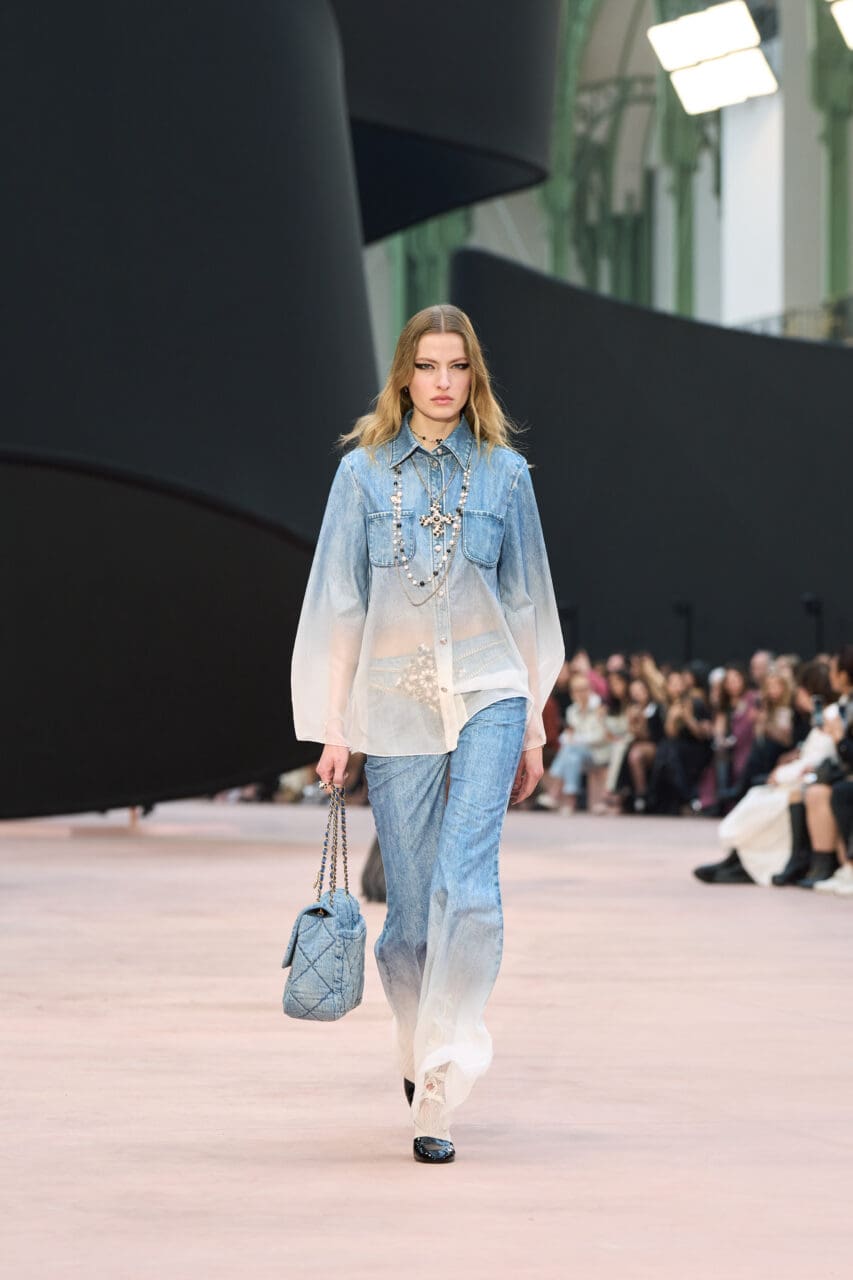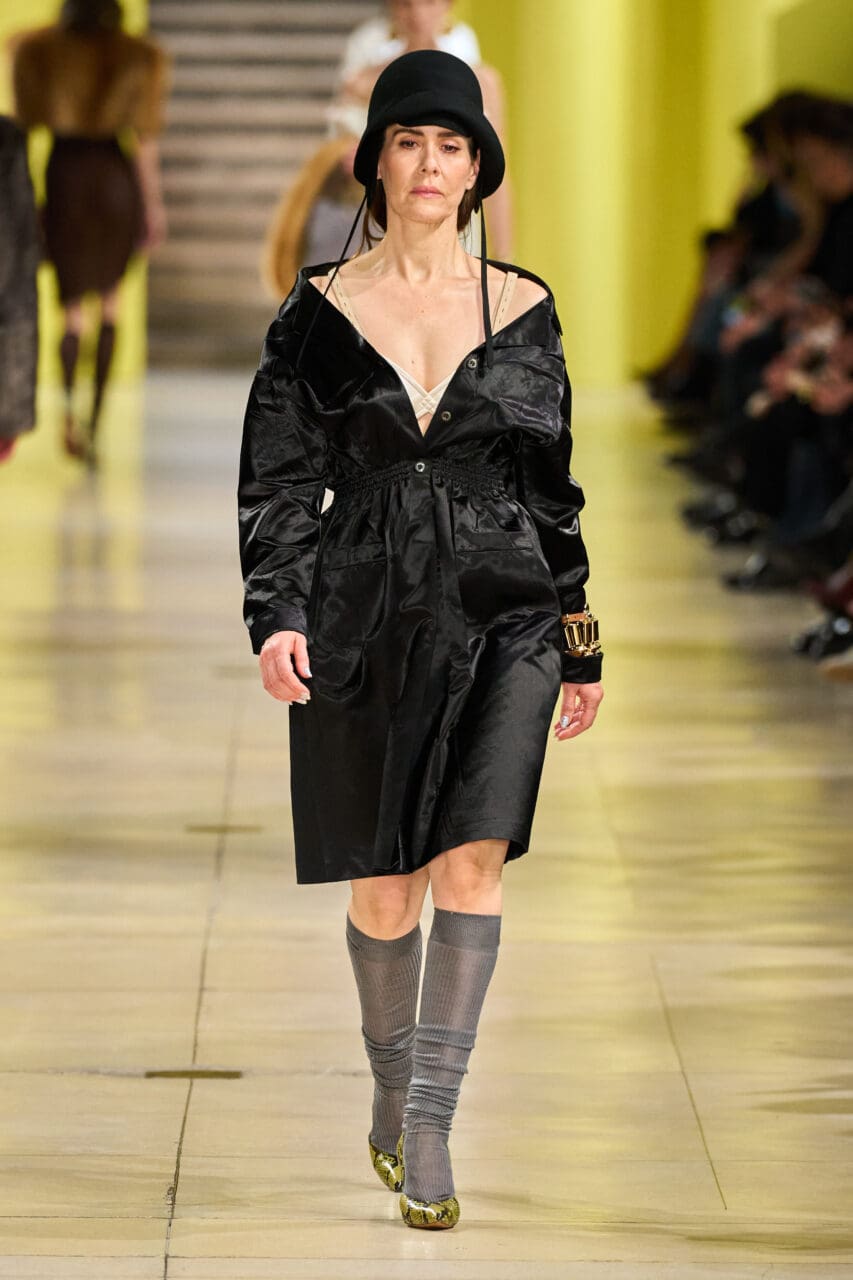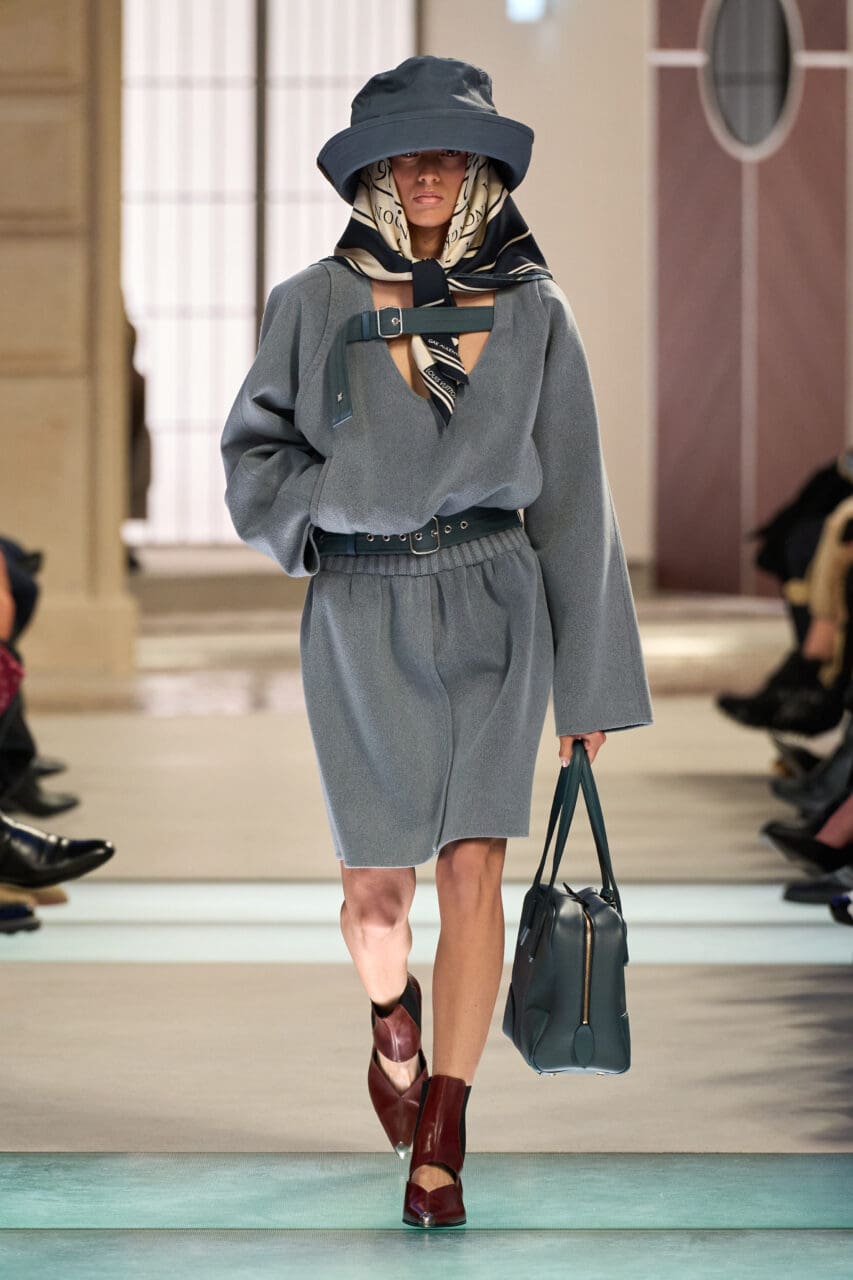Iris van Herpen has long been an unsung hero of the couture week calendar – not necessarily drawing in the huge crowds seen at the likes of Chanel, Dior or Valentino, but quietly impressing with her breathtaking, boundary-pushing designs. Stand-out moments include her Magnetic Moon Dress from autumn/winter 2013 (a piece later acquired by The Metropolitan Museum of Art) and her hypnotic autumn/winter 2019 collection, inspired by the work of kinetic sculptor Anthony Howe. She’s attracted a series of high-profile fans over the years, too, from Lady Gaga and Björk to Beyoncé and Grimes.
For her 15th anniversary collection, van Herpen is thinking about the future. “Instead of looking back, I wanted to look forward,” the Dutch designer tells Vogue via Zoom, a few days ahead of her first physical show in Paris since the pandemic began. “The collection dives into the moment where hyper-reality is your reality; where the distinction between digital reality and physical reality is merged [and] it becomes impossible to know the difference between the two.”
While a whole host of brands have entered the Metaverse via NFTs and digital clothing on avatars, van Herpen had partnered with Microsoft to bring the digital and physical worlds together using augmented reality (AR) technology – although sadly, illness within the Microsoft team meant that it wasn’t possible to realise this vision on the day itself.
Still, the designer took inspiration from Ovid’s Metamorphoses to explore the multiple identities that can exist across the physical and digital realms, particularly looking at the myths of Arachne, Narcissus, and Daphne and Apollo, which were incorporated into van Herpen’s intricate designs. “I went back to Ovid’s poems, which talk about transformation and metamorphosis of identity,” she says. “It’s such a timeless topic: the questions of existence and of who we are beyond our physical bodies. Those questions are so relevant today, and actually becoming more relevant with our digital reality is expanding.”
Of course, these ideas of transformation and technology have long been embedded in van Herpen’s work, ever since she first graced the Paris Couture Week schedule with her oscillating, sci-fi-inspired designs back in 2011. Digital technology, too, has always been central to the construction of her pieces, which involve complex 3D printing techniques and innovative new materials.
This season, these include hi-tech biodegradable materials made from algae and leftover cocoa bean shells, as well as a silk made from banana leaf. “The materials are very future-orientated, but with a natural twist,” van Herpen explains, adding that upcycled materials also feature (the designer has used recycled ocean plastic again, for example, as part of an on-going collaboration with Parley for the Oceans).
By using these textiles, van Herpen hopes to inspire other designers to adopt more sustainable materials moving forward. “[The work] we’re doing with these materials is not exclusively for us; these materials are available for other brands too,” the designer comments. “A very important part of the solution is collaboration; we have to think more like a community.”
Van Herpen also sees the potential for a more sustainable industry via the use of digital technology. “We all know fashion needs to change as an industry. There’s a big problem with overproduction,” she says. “With couture, we only create what clients want, but the Metaverse could help ready-to-wear brands show their collections digitally and monitor what customers want. This could reduce production massively.”
View this post on Instagram
While van Herpen is forever forward-looking in her approach, the designer has been working on a new retrospective for the Musée des Arts Décoratifs in Paris next year, giving her the opportunity to take stock of what she’s achieved to date. “It’s really like a time machine, going through all the collections, inspirations and collaborations,” she reflects. “It feels quite special to be able to do that.”
One of her proudest achievements is having her designs acquired by some of the top museums around the world, including The Metropolitan Museum Of Art, the Royal Ontario Museum and the Groninger Museum. “[Seeing] the museum world embrace my work in a different way; it brings a lot of meaning to the work,” van Herpen continues.
As for her hopes for the next 15 years? “My main focus is showing an alternative within fashion of how to think, how to make, how to create, how to collaborate – I think it’s more important than ever,” she concludes. “I hope to be an example that you can be successful, even if you’re not the biggest. And maybe you [can have] a bigger effect because of that decision.”
Editor
Emily ChanCredit
Lead image: Getty Images





